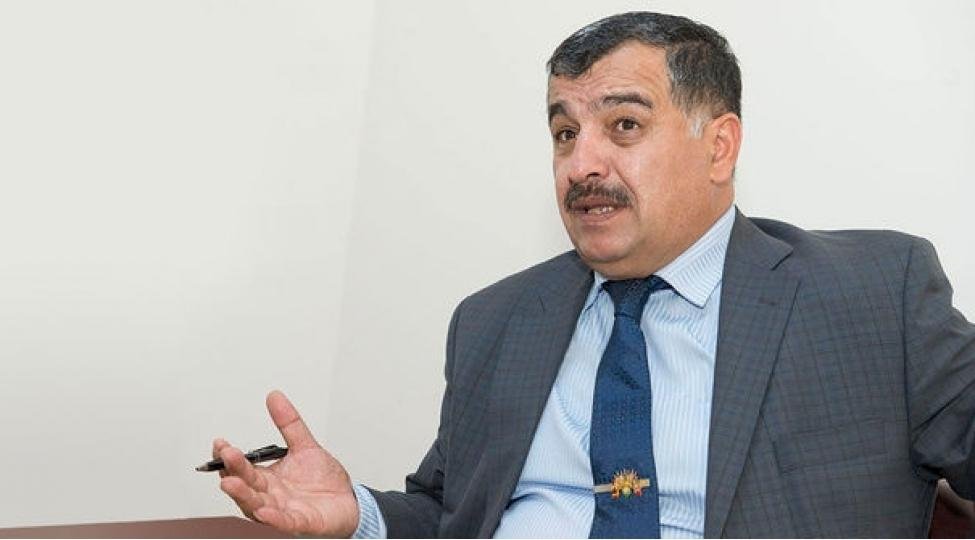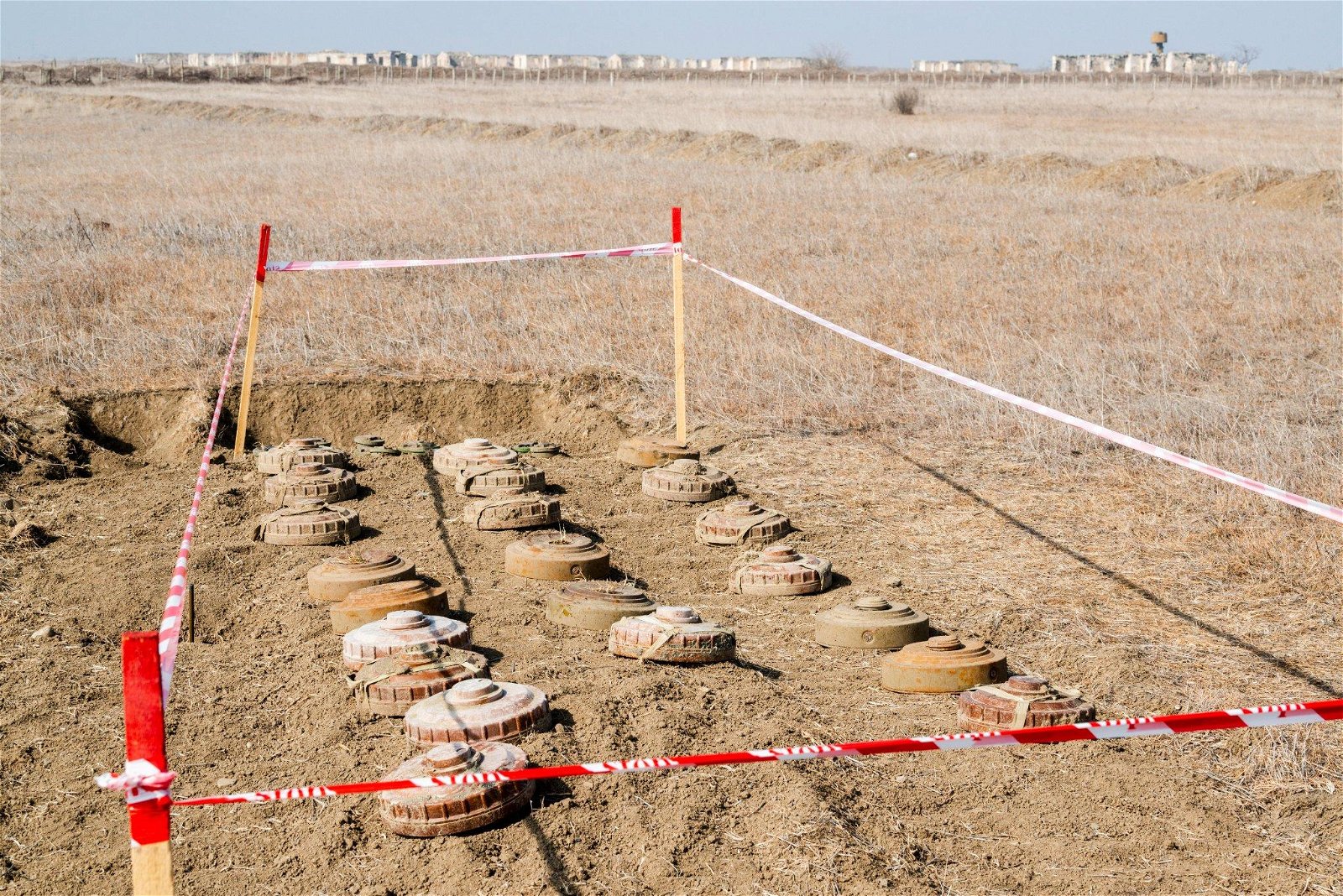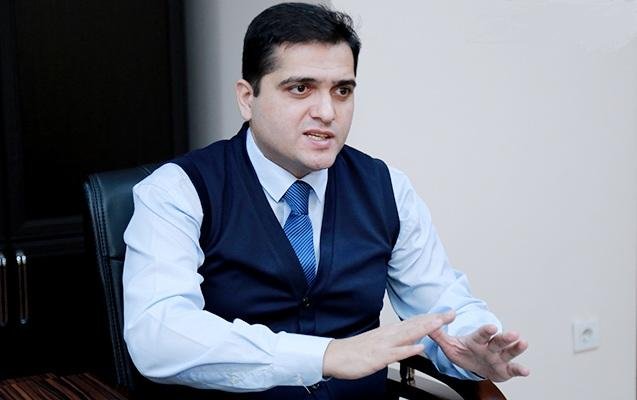UN NGO: International community should stand with Azerbaijan in its fight against landmines Landmine danger in Azerbaijan
International Institute for Rights and Development - Geneva (Institut International pour les Droits et le Développement - IRDG), a non-governmental organization with special consultative status at the United Nations, submitted this week a written statement to the UN Secretary-General as part of the 51st session of the Human Right Council dedicated to the promotion and protection of all human rights, civil, political, economic, social and cultural rights, including the right to development.
The statement highlighted the ongoing mine threats in those territories and the contributions of Armenian armed detachments to further intensifying these threats by lying landmines after the 2020 war between Armenia and Azerbaijan. IRDG called on the European Union and international organisations, human rights organisations and donors to support Azerbaijan's efforts aimed at bringing mine-free life to the liberated lands.
"Azerbaijan is currently addressing the clearance of remnants of war with all the means at its disposal," the statement reads, adding that once occupied lands have been mined heavily during their nearly 30-year-long occupation by Armenia since the early 1990s. "Landmines are usually buried underground, and the majority are activated by pressure. often situated close to where families live and work. Children are especially oblivious to the risks associated with landmines due to their inquisitive nature and height measured from the ground up. De-mining is imperative for the preservation of their lives and that of their families. ANAMA specialists had to spend a long time cleaning the impenetrable trees that grew over the mines."
IRDG notes that in addition to the previously buried mines, some of the minefields in the liberated Azerbaijani lands are believed to be laid by illegal Armenian armed detachments that are still deployed there. Some media reports claimed that the mines recently found in Saribaba height near the Shusha district were planted despite the presence of the Russian peacekeepers in the territory and the tripartite agreement that calls for the removal of Armenian armed formations.
Baku-based political analyst and former military serviceman Uzeyir Jafarov says the reason for the ongoing landmine danger in the liberated lands should be sought in the massive and chaotic mining of the territories by the Armenian forces.

"Despite the intensive mine action efforts of Azerbaijan, it could take years to neutralize the mine threats completely in the liberated lands because the chaotic planting of the landmines makes it quite difficult to find and defuse the explosives quickly and easily. It's impossible for a sapper to check the lands inch by inch for a landmine as the separatist are believed to plant the mines not only in open fields but also under houses, infrastructure facilities, man-made wells or under deliberately cemented areas to carpet the territories chaotically with landmines," Jafarov told Caliber.Az, adding if Soviet-era landmines are still discovered then those planted by Armenians could survive under the land for many years to come unless Armenia shares exact minefield maps or information about their locations.
The still prevalent mine threat in the liberated Azerbaijani lands claimed the lives of more than 230 Azerbaijani residents, including civilians and servicemen. These areas are located near residential areas, far from the areas where intensive military operations were conducted. No information was provided about buried mines in the destroyed settlements, villages, water and canal areas, agricultural fields, orchards, vineyards and other liberated territories. Military analyst Jafarov is convinced that the implementation of the "Great Return" program by the Azerbaijani government aimed at relocating the former IDPs back to their houses could face major setbacks due to the Armenian landmines still hiding in the liberated lands.
"We have recently brought our residents back to the Aghali village of liberated Zangilan. The resettlement will span other territories, as well. But are they safe from landmines? This is the question. In the current circumstances, despite ANAMA [Azerbaijan National Mine Action Agency], it is not yet fully possible to completely get rid of the landmine threat. Our compatriots have been trapped in deadly mine blasts since the end of the 2020 war and it signals about the severity of the mine danger," he said.
According to IRDG's statement, during the mine action, ANAMA cleared 9,255 hectares of land in the liberated territories from landmines from November 10, 2020, to August 15, 2022. As a result, 21,670 pieces of anti-personnel mines, 11,353 pieces of anti-tank mines, and 31,731 pieces of unexploded ordnance were discovered, out of a total of 64,754 pieces and neutralized. Most of the discovered mines are Armenian-made PMN-3 and OZM-72 type mines according to the information provided by ANAMA.

However, ANAMA's uninterrupted activities need international cooperation to facilitate the mine action and reach the goals earlier, IRDG wrote, highlighting the delay of the international community to act on this dangerous case that is still killing people and remains to be a major impediment to world peace.
"We call the EU and the international organizations, human rights organizations, and donors to stand together with Azerbaijan in the fight to support mine-free [Karabakh]and safe return. Demining is a field of activity that requires lots of effort and serious financial costs," the NGO explained in its statement.
"The mindset behind the UN strategy on de-mining is that mine action entails more than removing landmines from the ground. It includes efforts and civilian missions to train people, pass on best practices and render societies self-sufficient in the fight against anti-personnel mines. It also includes high-impact efforts to protect people and the environment from danger by helping victims become self-sufficient through community capacity-building, inter-agency cooperation and proper training. We call upon the international community to engage in active collaboration and mutual support in training the people and advancing the resolution of the landmine problem in Azerbaijan."
Baku-based political analyst, and head of the ATLAS research centre, Elkhan Shahinoghlu is convinced that the landmine threats in the Azerbaijani lands go well beyond local boundaries and threaten the peace and stability in the entire region to warn the international community of close cooperation with Azerbaijan.

"The mine danger is still prevalent and the process is ongoing given the regular provocations of the Armenian forces. The latest provocations on the Armenia-Azerbaijan border were also linked to landmines since the Armenian saboteurs planted landmines in the territories and supply routes used by the Azerbaijani army. Armenia did not join international conventions on landmines to continue its destructive activities against Azerbaijan while the latter always voiced its readiness to cooperate," Shahinoghlu told Caliber.Az, adding although Armenia shared some minefield maps, this was not helpful given the chaotic method of planting landmines in the Azerbaijani lands.
He noted that the United Nations should seriously react to the prevailing danger of landmines in Azerbaijani lands.
"Although separate states provided assistance in mine action to Azerbaijan, this is not sufficient. This should be a topic of serious discussion in international organizations. Because in addition to previously planted landmines, the Azerbaijani lands are contaminated with new explosive devices produced in Armenia after the 2020 war. Round tables and seminars should be organized overseas to attract the broad attention of the international community to the issue," Shahinoghlu said.
Since the end of the war, the Azerbaijani government has been conducting intensive demining operations in the liberated territories - an indication that mine threats still remain there. Officials in Baku are convinced that the maps hidden by Armenia could help neutralize at least one million landmines planted in the once occupied Azerbaijani lands. It is estimated that the demining process could take 10 to 13 years to complete.








